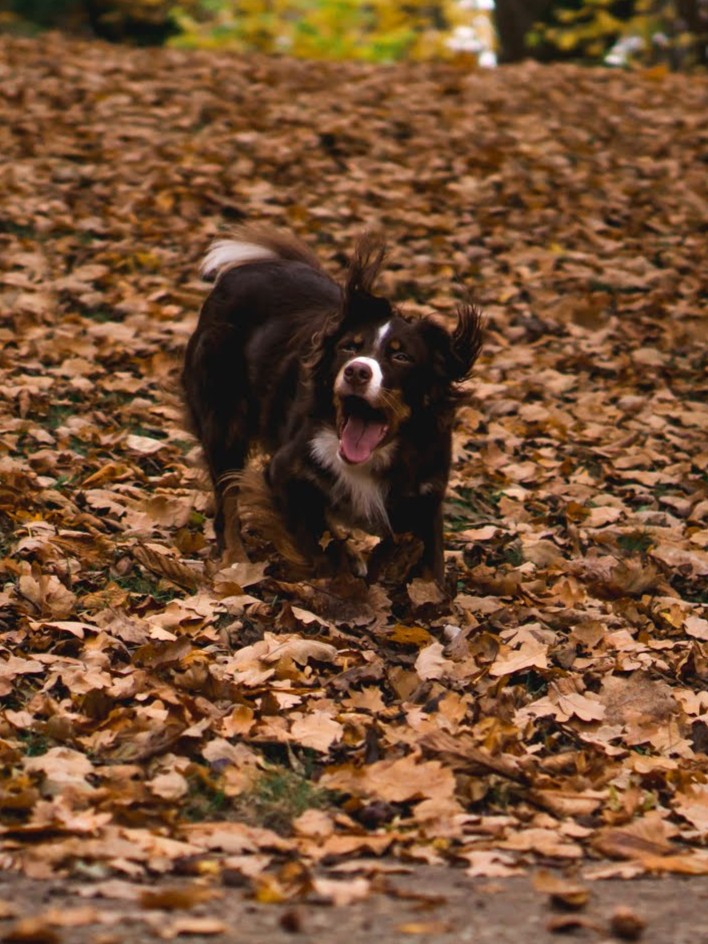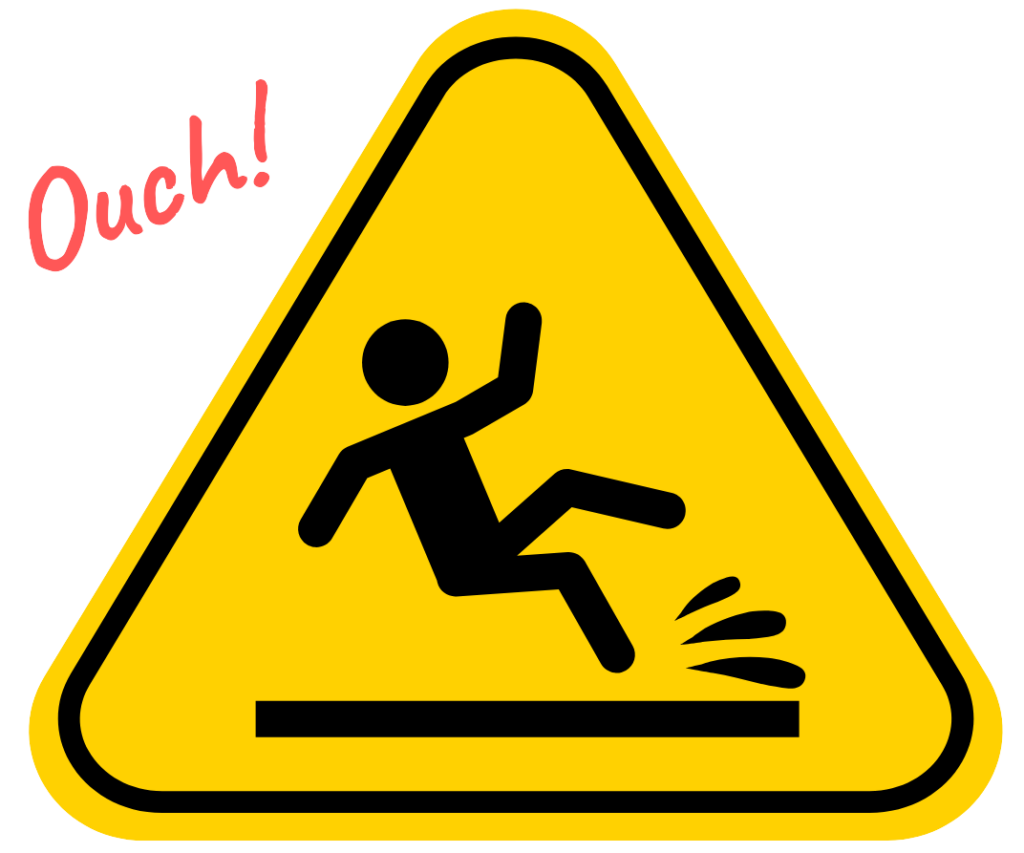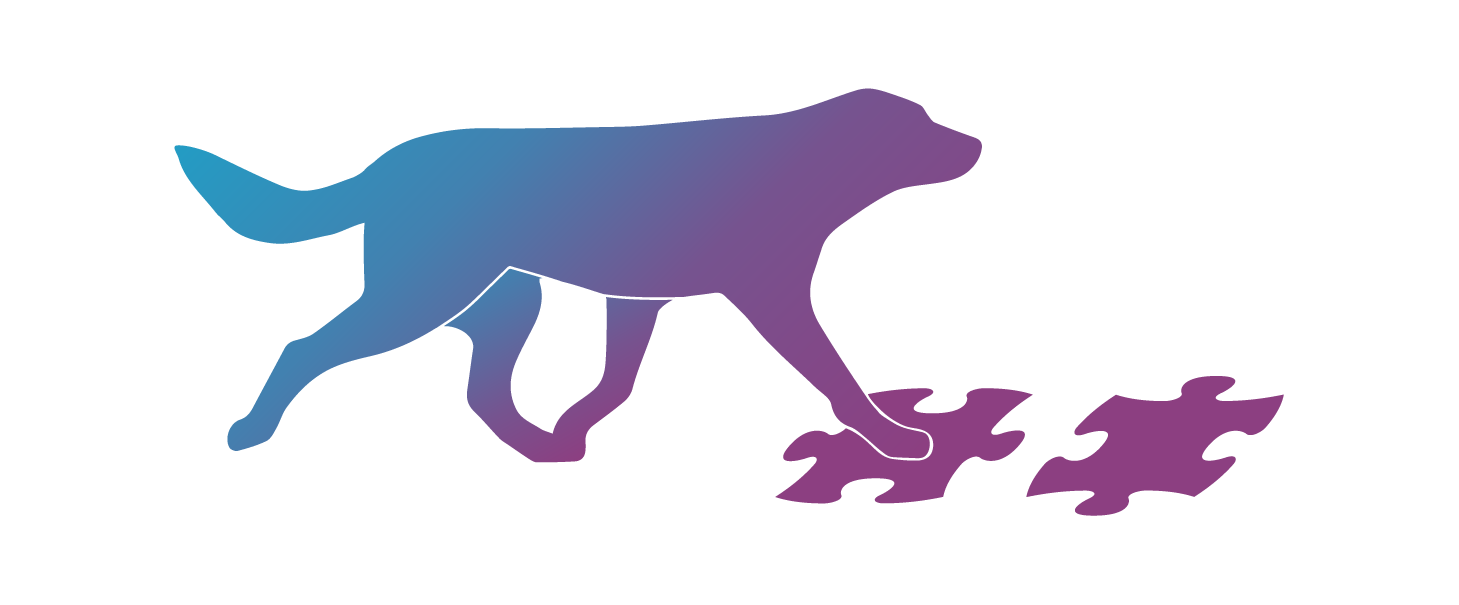Bo’s struggle with tight left turns
I was doing some agility training with Mr Bo back in 2020 and noticed that whenever I cued an exercise with a tight left turn, Mr Bo would hesitate for a split second, then go and do the exercise… While whining and barking during the left turn! I’ve heard people say “He’s an Aussie, what did you expect?”.
Well yes, he is an Aussie who knows how to bark and uses it when necessary, but it’s almost never for fun or just-because. I’ve heard that Aussies are vocal workers, but that has never been my experience with them. Mr Bo vocalizes when he’s getting frustrated and usually there’s a good reason for it! He’s very good a giving me feedback on what he thinks of my training skills 😆 Remove the reason for his frustration and he works quietly.

Mr Bo demonstrating his beautiful bark 😅
The sneaky culprit
While watching the videos of the training sessions, thinking that I would find a handler mistake causing Mr Bo’s frustration with the turns, I discovered that almost every time he moved through the turn, he SLIPPED with his rear foot.
It wasn’t a big slip that you would easily notice while actually training. But even a small slip can be incredibly uncomfortable!
You have probably experienced it yourself on a wet grass or icy road. You slip, your heartrate goes up, your steps become shorter and less confident, you may even try to avoid the exact spot where you slipped. Or avoid doing the same movement you did while you slipped!

There’s a reason why we have warning signs on slippery surfaces. Slipping is uncomfortable!
In fact, slipping is so uncomfortable that it can quickly become aversive.
Meaning that when the dog slips during the exercise then slipping translates as “Something negative and uncomfortable happened as a result of me doing the exercise” and despite you offering your dog a reinforcement, the negative outcome is now also attached to the exercise.
So the dog will start avoiding parts of the exercise, can be hesitant to respond to familiar cues or not do the exercise, looking like they just don’t understand the criteria.
When I saw Mr Bo slipping during the tight left turns, I knew that even if slipping wasn’t the culprit behind him vocalizing and hesitating, I wanted to see if I can help Mr Bo move through turns better and without slipping. Because slipping means trouble.
Not only slippery surfaces!
Slipping has 2 main causes: slippery surfaces and equipment (obviously 😅) and lack of body control – caused by poor body awareness and coordination.
We live in Estonia where we have winters with snow and ice. Meaning that our walking paths are slippery for several months per year. Doing body awareness and coordination exercises has significantly reduced my dogs slipping on icy paths. I first discovered it with Pipi – the dog who got me into canine fitness training. She was constantly slipping on winter roads… until we started doing fitness training with her and slipping disappeared almost completely!

Pipi slipped a lot less on icy winter roads after we started doing body awareness and coordination exercises with her!
Because Mr Bo’s slipping incidents happened on dry natural grass that is one of the main training areas for agility and Mr Bo’s slipping happened only in one direction, my thinking was directed at Mr Bo’s body awareness and coordination as the reason behind him slipping.
Body control while moving is different!
Mr Bo, a dog of a canine fitness trainer (me!) had been doing body awareness and different fitness exercises for most of his life. He’d also been cleared by our vet team for any injuries. Back then I was watching and listening all kinds of different lectures on human body awareness, coordination and movement training.
It hit me – despite Bo having pretty good body awareness and coordination with slower speed and fairly stationary exercises… What if he’s struggling with body awareness and coordination while running? Adding speed always adds an extra layer of complexity to exercises and knowing how to place paws on paw targets while standing is quite different from running and hitting a target while in motion!
So, I set out to create an exercise where Mr Bo can practice coordinating his steps and precision while in moving through a turn.
How you train coordination skills matters big time!
In order for the exercise to work, it had to fulfill very specific criteria:
1. No handler cues
Handler cues are distracting for the dog. If I, the handler, mess up, my dog will most likely mess up. I wanted to create an exercise where Mr Bo could focus on moving through the turn, not on what I’m doing. For all I knew, I could’ve been the culprit behind him slipping! So my idea was that the dog should be doing the exercise independently, without handler cues and the handler staying out of the picture as much as possible.
2. Easy enough for the dog not to think about the exercise criteria…
… but focus on their movement through the exercise. The dog shouldn’t be thinking about WHAT the exercise is about, just HOW they are doing it. Only focusing on exercise criteria (the WHAT, doing a tight turn) – without any attention to how the dog was doing it – got us into this position in the first place! 1) Focusing on understanding the exercise criteria and 2) knowing the criteria and trying to find the best way to do it – these are 2 very separate things!
3. I needed to be able to see and observe what was happening during the exercise
So that I could increase the level of difficulty when Mr Bo was doing well. And make the setup easier as soon as I noticed Mr Bo struggling with the movement – hesitating returning to the exercise, vocalizing, avoiding parts of the exercise or showing any signs of stress. I was designing an exercise to help Mr Bo feel more comfortable with a movement he found difficult. Pushing through a difficult movement until he got it wasn’t going to work – otherwise just doing the agility exercises with tight turns would’ve solved the problem, not make it worse. It was crucial that I noticed when things were getting difficult for Bo and adjusted the setup instead of waiting for him to “get it”!
The very first Movement Puzzle
That’s how the very first Movement Puzzle was born. I took the 2 bowl game pattern exercise I had learnt from Hélène Lawler at Fenzi Dog Sports Academy, had Mr Bo moving around a small group of cones and placed poles on the ground behind the cones to help Bo focus on his foot placement while moving through the turn.

The very first Movement Puzzle was a simple exercise of us doing the 2 bowl game with 2 poles placed on the ground behind cones to help Mr Bo focus on his foot placement during tight turns.
While looking similar to Vito’s game, the 2 bowl game and the way we use it in Movement Puzzles has some important differences from Vito’s game, I’ll cover that in a separate post. Starting Movement Puzzles with “I’ll just do it like Vito’s game” will start tampering your progress and your dog’s learning with these exercises, so it’s important to know the difference!
This setup allowed me to stay back and not give Bo any cues that could distract him or ask him to do something that he wasn’t comfortable with. Using a clear pattern means that Bo can move through the exercises independently, without any additional information from me.
Bowls are clear focus points for the dog so he can move nicely with a forward focus and without having to look at me. The very clear exercise setup and reinforcement pattern minimized any guessing from him and he could focus just on his foot placement and balance during the turn – the things we needed to work on.
I could easily adjust the setup by changing the cone, pole and bowl positions. And this setup also gave me the time and space to observe Bo’s movement during the exercise, without having to rely just on video. I could see when he was struggling, missed a step, started rushing, slipped, so I could quickly adjust the setup and make it a bit easier when needed.
Solve the reason behind frustration… and the frustration behaviors disappear!
It was simple and super effective. After just 2 weeks of working on that simple exercise, Mr Bo was a lot more confident moving through tight turns, his foot positioning was more precise. No more vocalizing when I cued a left turn in other training sessions! What a win! 🥳
He also became a lot more comfortable doing tight left turns while running freely in the forest. He had been avoiding that movement and preferred doing tight right turns whenever he had the choice. But thanks to us working on his turning skills at home, he realized that he can actually do it comfortably and started using it more and more. How exercises at home help dogs choose the difficult movements more naturally when running freely is a story for another time 🙂
Next steps
From this very first puzzle I started experimenting if we can use exactly the same pattern and training philosophy for helping dogs with other movement challenges. Like moving over tilting surfaces, going through tight spaces, stepping over gaps, moving through noisy stuff…
The goal was to create an environment where dogs can practice their coordination and balance in situations that may be challenging for them (not as a species, but as individuals). Read more about what Movement Puzzles are in this post here.
After having taught this fun concept to more than 1500 dogs and their humans, I can honestly say “Yes, it does work!”
If you too want to start with fun Movement Puzzles, then the first step is teaching your dog the foundation pattern of moving between 2 bowls. You can get free How To instructions for this exercise here.
Happy training and I’ll see you in the next post!
Mari
Enjoyed this post? Leave me a comment and share this post with your friends using the links below 👇
